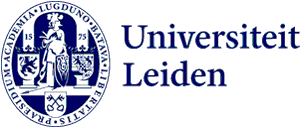
Strength-based communication training: ‘It’s a great way to get to know yourself’
Simple and effective communication with your colleagues is often easier said than done. The ‘Use your strengths to communicate’ skills lab helps you hone your communication skills. We asked two colleagues about the impact of the course on their personal and professional lives.
Hi Liesbeth and Wendy! Could you explain why you decided to take the ‘Use your strengths to communicate’ training?
Liesbeth: ‘For me, it was because of a new career step. My new role is all about talking to people in a variety of circles and working to strengthen collaborative relationships. Then you need to know who you’re talking to and how to achieve your goals.’
Wendy: ‘I deal with a wide range of people in my job. These interactions are interesting but it can be hard to figure out my role in them or how to convey my ideas. The course is all about basing your communication on your strengths. But then I think, “Okay, so what are my strengths?” You don’t usually look at yourself in that way.’

What communication challenges do you face in your role?
Wendy: ‘I tend to focus on the other person. So my challenge is whether I myself am communicating effectively. Am I being clear? Am I communicating what I want to communicate? Those were the questions I wanted to tackle.’
Liesbeth: ‘My role aims to bring together public and private groups. These all have different strategies and working styles, not to mention completely different work environments. My work is about establishing direct contact between parties, acting as an intermediary. So it’s crucial it’s all about representing both groups while staying true to myself.’
‘It only takes two-and-a-half days and you’ll benefit from it for the rest of your career’
What insights from the training surprised you?
Wendy: ‘You are confronted with how much information you are receiving. It’s also about non-verbal communication – for example how you sit on your chair. That really hit home because you literally see what is happening to someone in a conversation and to yourself. The training only took two days with one follow-up morning but it has had a huge impact.’
Liesbeth: ‘I agree and would add that the whole programme, its structure, the strength of what the trainer had to say and the exercises form a whole, all of which together make a huge impact. I was pleased with how satisfying it was, although it was intense at times.’
Wendy: ‘True, it was tough and confronting at times but that’s what you learn from most. I would recommend this broad communication training to everyone, for everyday life not just work. Actually for anyone you meet.’
What would you say to colleagues who are unsure whether to take this training?
Wendy: ‘It only takes two-and-a-half days and you’ll benefit from it for the rest of your career. That alone, but it also helps you understand some people’s reactions to you and your reaction to others. And it can make for a calmer and clearer communication environment.’
Liesbeth: ‘I agree. So the question really is: why wouldn’t you do it? It offers so many pointers for you, your work and your role.’
Wendy: ‘It’s just great basic training and get-to-know-yourself training. And I agree: everyone deserves to discover their communication style and how to use it.’
Wendy Persson-Briscoe is an office manager and management assistant at the Leiden University Fund (LUF) and Alumni Office. Liesbeth Veugen is an innovation manager at the Luris knowledge exchange office.
Sign up now!
In the interactive and dynamic Use your strengths to communicate skills lab, you will learn about different communication techniques and hone your communication skills. You will become more aware of your own style and learn practical techniques that you can use in any situation. This skills lab is also recommended as preparation for your GROW conversation. The next training starts on 13 February. Sign up on this page.
Text: Iris Molenaar
Banner picture: Igor Roelofsen
